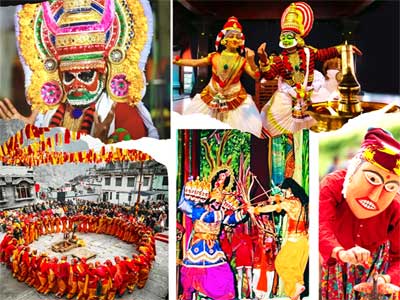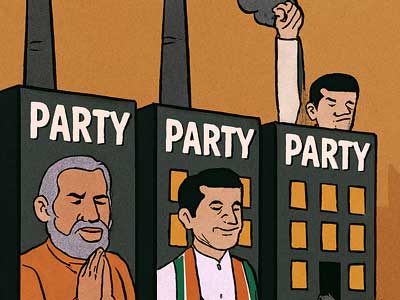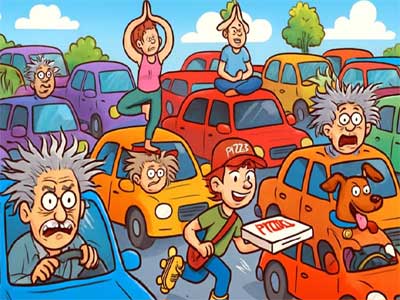Ritual theatre, a form of performance that combines sacred rituals with dramatic expression, is typically performed in temples or community spaces and is deeply rooted in religious festivals and collective memory.
Traditional theatre performances typically blend acting, singing, dance, music, dialogue, narration, and recitation. At times, they may also incorporate elements such as puppetry or pantomime. These arts, however, are more than simply ‘performances’ for an audience; they may also play crucial roles in culture and society.
These rich traditions of ritual theatre, which are deeply woven into the fabric of community life through religious festivals and collective memory, are not just performances; they are living expressions of culture passed down through generations. It is precisely because of their crucial role in culture and society, and their nature as living traditions, that international bodies like UNESCO recognise them as Intangible Cultural Heritage, a designation that acknowledges their value to humanity and encourages their safeguarding for the future.
It is both traditional and contemporary, encompassing inherited traditions as well as current rural and urban practices. It is inclusive, shared across communities and evolving through generations, giving people identity, continuity, and social cohesion. It is representative, valued not for exclusivity but for its role in communities, sustained by knowledge and skills passed on over time.
Presently, 15 elements of Intangible Cultural Heritage have been inscribed on UNESCO’s Representative List, granting them international recognition and a global platform.
Recognising the cultural value of these living traditions, UNESCO has inscribed Kutiyattam, Mudiyettu, Ramman and Ramlila ritual theatre forms on its Representative List of the Intangible Cultural Heritage. Notably, there are shared themes across ritual theatres like Divine Storytelling, Sacred Space, Community Participation, Transmission of Knowledge & Values and Fusion of Art Forms.
Kutiyattam, practised in Kerala, is one of India’s oldest surviving theatrical traditions, dating back over 2,000 years. Blending Sanskrit classicism with Kerala’s local traditions, it uses a codified language of eye expressions, i.e. neta abhinaya, and hand gestures, i.e. hasta abhinaya, to explore a character’s emotions and thoughts. Performers undergo 10–15 years of rigorous training to master techniques such as breath control and subtle muscle movements, allowing them to elaborate on a single episode for days, with full performances lasting up to 40 days.
Traditionally staged in temple theatres, i.e. kuttampalams, the art form retains its sacred character through rituals and the symbolic presence of a lamp on stage. Today, efforts by various cultural bodies aim to preserve and sustain this unique Sanskrit theatre tradition. Though classical, Kuttiyatam adapts mythological stories and narratives drawn from Sanskrit drama, integrating legendary and devotional elements.
Another ritual dance-drama, Mudiyettu from Kerala, depicts the mythological battle between goddess Kali and the demon Darika. Performed annually in Bhagavati Kavus after the harvest, it begins with purification rituals and the drawing of a sacred kalam of Kali. The performance involves the entire village, with each caste contributing, reinforcing community identity and cooperation. Elders transmit the tradition by training younger apprentices, ensuring the continuity of cultural values, ethics, and aesthetic practices across generations.
Ramman is also an annual religious festival celebrated in late April in the twin villages of Saloor-Dungra in Uttarakhand, in honour of the local deity Bhumiyal Devta. It features complex rituals, recitations of the Ramayana, songs, and masked dances, with each caste and group playing distinct roles. Some of the instruments documented include Dhol, Damau, Manjira, Jhanjhar and Bhankora. These instruments help accompany chants, dances, and storytelling segments during the performances.
Combining theatre, music, oral traditions, and historical reconstructions, the festival embodies the community’s spiritual and cultural identity while reinforcing social cohesion. To ensure its continuity, the community emphasises intergenerational transmission and seeks recognition beyond its region.
Most popular, Ramlila, literally meaning “Rama’s play,” is a dramatic re-enactment of the Ramayana epic, performed through a sequence of scenes that combine song, narration, recitation, and dialogue. Traditionally staged across northern India during the autumn festival of Dussehra, Ramlila follows the ritual calendar and varies in scale and duration. Some of the most renowned Ramlilas are staged in Ayodhya, Ramnagar, Varanasi, Vrindavan, Almora, Satna, and Madhubani.
The performances are largely based on the Ramcharitmanas, a sixteenth-century devotional text composed by the poet-saint Tulsidas in Hindi to make the Sanskrit epic accessible to wider audiences. Most Ramlila span 10 -12 days, though some, such as the famous month-long Ramnagar staging, extend much longer. These festivals, held across numerous towns and villages, commemorate Rama’s return from exile and his battle with Ravana.
In the heart of India's diverse landscapes, these ritual theatres stand as timeless bridges between the divine and the everyday, weaving myth, music, and movement into the very soul of communities. From the intricate gestures of Kutiyattam in Kerala's temple halls to the vibrant communal dances of Ramman in the Garhwal Himalayas, they remind us that culture is not static but a living pulse, nurtured through shared participation, sacred spaces, and generations of apprenticeship.


















Related Items
India stuck in traffic; Cities halt, Horns holler, and time takes a nap
India’s deep dark fraud economy unveiled…
Bangladesh’s Radicals vs India’s Liberals, A dangerous imbalance…